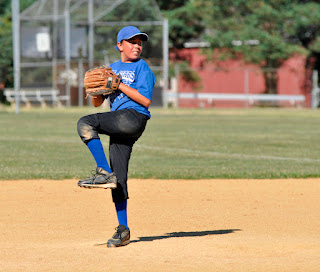The changeup is the staple off-speed pitch, usually thrown to look like a fastball but arriving much slower to the plate. Its reduced speed coupled with its deceptive delivery is meant to confuse the batter's timing. It is meant to be thrown the same as a fastball, but simply farther back in the hand, which makes it release from the hand slower but still retaining the look of a fastball. A changeup is generally thrown 8–15 miles per hour slower than a fastball. If thrown correctly, the changeup will confuse the batter because the human eye cannot discern that the ball is coming significantly slower until it is around 30 feet from the plate. For example, a batter swings at the ball as if it was a 90 mph fastball but it is coming at 75 mph which means he is swinging too early to hit the ball well, making the changeup very effective. The most common changeups are:
- Circle changeup
- Forkball
- Fosh
- Palmball
- Straight changeup
- Vulcan changeup
What is your favorite pitch? Read more, here.
Visit us at The Baseball Barn! Come practice your signature pitch.
(707) 290-9731
777-D Elmira Road
Vacaville, CA 95687
Website








